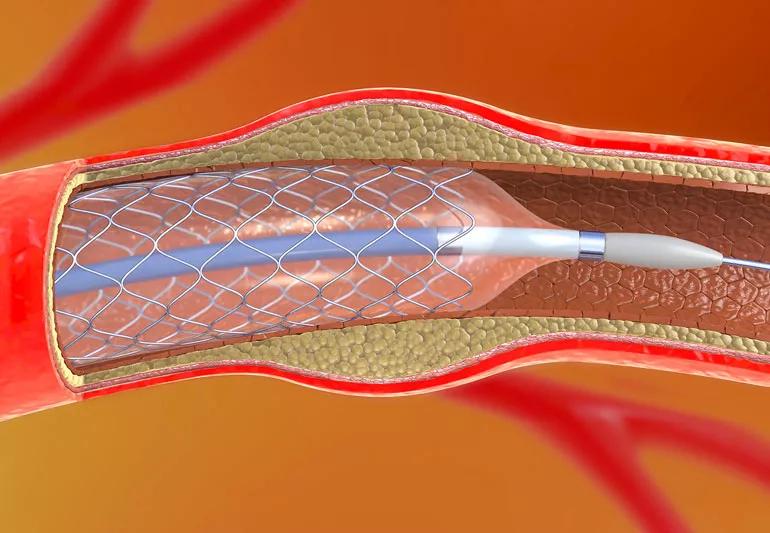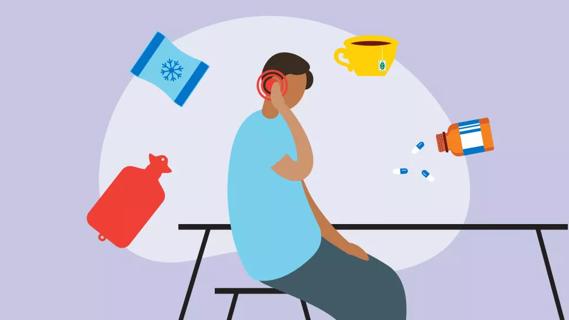Advertisement
The best treatment depends on the cause

Good blood flow throughout your body is obviously important. That’s why stenosis, or narrow blood vessels, is a problem. And unfortunately, this problem can happen again after you’ve had a blocked artery reopened. That’s when it becomes restenosis.
Advertisement
Cleveland Clinic is a non-profit academic medical center. Advertising on our site helps support our mission. We do not endorse non-Cleveland Clinic products or services. Policy
Stent placement helps restore blood flow through previously blocked arteries, but some patients develop restenosis (re-narrowing) over time.
Stephen Ellis, MD, Director of Interventional Cardiology, explains, “There are effective ways to restore blood flow if restenosis occurs, but it’s important to assess the cause and to tailor treatment accordingly.”
Despite advances, Dr. Ellis says, “in-stent restenosis still occurs in approximately 3 to 10% of patients within six to nine months, and sometimes afterwards. We have learned that restenosis is a very complex process.”
Some known causes include:
• Stents that are too small or misaligned in the blood vessel.
• Older-generation stents.
• Abundant healing within the stent with scarring.
Before any treatment for restenosis, your doctor will perform tests to understand what’s causing any problems. Catheterization allows doctors to look inside the artery and to perform tests including:
Different options are available to treat restenosis the first time it happens:
Advertisement
For some patients, restenosis is a recurring problem. If the blockage has recurred several times or if there are multiple blockages, your doctor may recommend bypass surgery to restore adequate blood flow.
Other options include:
Medicines. Two oral medications may somewhat lessen the risk of restenosis: sirolimus, the drug used on the first generation of drug-eluting stents, and cilostazol, another type of medicine that helps widen blood vessels and reduce clumping of red blood cells. These are typically used in conjunction with balloon or cutting balloon angioplasty.
Though sometimes useful, these drugs aren’t for every patient and they require more study, Dr. Ellis says.
Brachytherapy. This treatment uses radiation to keep scar tissue from building up again in the stent. Doctors perform brachytherapy at the same time as angioplasty.
After completing angioplasty, the doctor threads another catheter with a “ribbon” of radioactive particles (isotopes) to the blockage, leaves it in place for a few minutes, and then removes the catheter.
When you face problems resulting from restenosis, it is important to find a center that has experienced doctors who are able to provide you with a broad range of treatment options.
Advertisement
Learn more about our editorial process.
Advertisement

Although allulose is an FDA-approved sugar substitute, more research is needed to understand its safety

Studies show those who walk faster tend to have a lower risk of heart disease

Recognizing subtle symptoms, like cold sweats, stomach discomfort and nausea, could be the key to survival

Statin use has been associated with weight gain but the reasons aren’t clear — and the benefits of statins far outweigh the risks

Some statins have been shown to slightly increase your risk of diabetes — but that shouldn’t keep you from taking the medication you need

Research points to an association between the health of your gums and cardiovascular disease

Factors like temperature, energy levels and sleep quality play a role in determining whether working out in the morning or evening is best for you

Lifestyle adjustments can help you raise your HDL, the ‘good’ cholesterol

Not all ear infections need antibiotics — cold and warm compresses and changing up your sleep position can help

A glass of lemon water in the morning can help with digestion and boost vitamin C levels, and may even help get you into a better routine